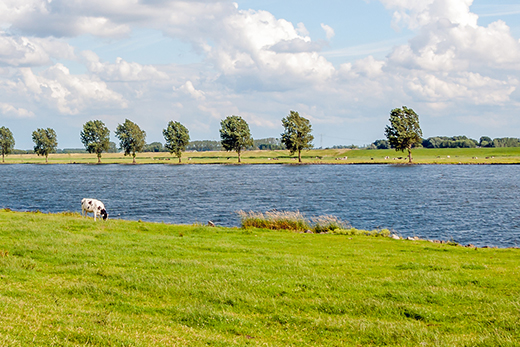Last month I wrote drystock farmers were claiming they were getting the thin end of the wedge in their requirements contained in proposals for Plan Change 1 by the Waikato Regional Council.
Since then I’ve been somewhat grudgingly allowed in to a dairy farmer meeting on how these same proposals will affect them – but not to write about it. I’ve also read a lot about the increasing antagonism between the two camps over this, where dairy interests are claiming: “We all have to abide by the same rules” despite yawning differences in future costs, as found by the Farm Environment Plan research done recently.
And the more I think about it, the more I can see significant issues have been either ignored or minimised in the thinking behind the proposed plan change. The focus was on cleaning up river waters, by minimising sediment, e.coli, phosphorus and nitrogen.
And mitigation efforts were based, understandably, on just what is widely available and used now – such as urea – with hopeful comments that something better may turn up sometime.
Climate change
No obvious mention of climate change, made more important by those involved in the Paris Agreement – including New Zealand – having now ratified it, and our commitment to reducing our greenhouse gas emissions to 11 per cent below 1990 levels by 2030 supposedly underway.
The fact our emissions have risen steadily and rapidly since 1990 and we’ve done nothing significant apart from buying dubious overseas credits, is cause for wonder about how we might even start on reductions?
No seeming cognizance of the unrest among our overseas-owned banks over current farmer levels of indebtedness, and quiet threats to start a few foreclosures. The milk price may have risen a bit, but the climate has been ensuring the lowered milk production may well negate that benefit. And with future trade politics unreadable for meat exports, drystock farmers will be a bit shy about asking for huge loans for fencing.
What’s wrong
So I’ve come up with a list of what I think is wrong with the current proposals I’m no scientist – although I was once married to one – but I’ve been involved in environmental issues for about 30 years now, and have read an awful lot.
1 : Urea. Allowing dairy farmers to continue using this product at current levels for another decade, and ignoring alternatives, which assist Mother Nature to do her job), that are already out there and have been successfully used by ‘enlightened’ farmers for more than a decade, just doesn’t make sense.
Usage levels rise every year, while the annual averages of pasture grown have reduced significantly since the mid-1980s. Where once research figures showed levels of 18 tonnes/ha in the Waikato, we now hear 13.5 tonnes/ha or possibly 15 tonnes/ha. Some of the ‘enlightened’ farmers are still growing between 18 tonnes/ha and 21 tonnes/ha.
2 : Climate change and carbon. People are finally talking about soil carbon, and its potential to be sequestered in pasture soils. The science fraternity had claimed our fertile soils couldn’t hold any more carbon. But now they are discovering hill country soils are actually gaining carbon, while flatter regions are losing it at about one tonne/ha/yr and have been doing so for about the last 30 years.
Research papers I’ve read recently talk about how soil life balloons when urea is applied to pasture, and gobbles up all the humus making plant detritus. No humus, no soil carbon sequestering.
3: Beef cows versus dairy cows. At present many beef cows drink from clean streams, which run everywhere in hill country. But dairy cows drink a lot more, because they are lactating hugely to provide humans with milk. Beef cows with calves produce just enough for their offspring, and don’t need to drink huge amounts.
Dairy cows at present tend to graze on nitrate-rich pasture, due to the urea spread. There is a huge amount of research showingthe rumen can’t cope with all that nitrate-ammonia. So they drink more to try and calm their rumbly tummies, and therefore pee more than ever. Listen to a group of dairy cows sometime, and hear the almost constant sound of waterfalls. So the pasture gets huge numbers of urine patches from the enriched pee, and the soil-groundwater has to cope with it.
So where does this lead to in the argument between dairy and drystock farmers in the Waikato?
Fence Streams
Drystock farmers are being required to fence many kilometres of clean running streams, within comparatively short blocks of time. Their beef cattle may be creating a small amount of pollution in such streams. It is surely possible for farmers to create easy access points to such streams, to avoid erosion and sediment.
They do not use much urea, but are not permitted to use any more than in the past. However, their soils are probably sequestering carbon, which may eventually be counted as carbon credits for climate change.
Dairy farmers are permitted to go on using the much greater amounts of urea on their pastures for another 10 years, with no indication as to what restrictions may be placed on them after that. So they can go on adding nitrogen to groundwater, and producing less pasture tonnage, as well as doing nothing for climate change.
They may well have spent vast sums on effluent management in recent years, but they have also increased their herd sizes, built new farm dairies with all the bells and whistles, and be very nervous now of their bank managers.
If all these issues could be taken into account in the final plan version, the uneven wedge might just about change shape to become a plank.



0 Comments
Leave a Comment